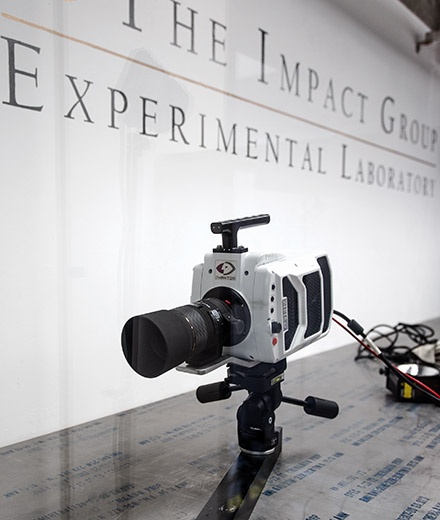Professors turning to new technology for online teaching
When the spring semester resumed, Cal State Long Beach professors found themselves jumping into a brave new virtual world, where Zoom had replaced classrooms and teaching students was a lesson in social distancing.
This new way of instructing, which professors quickly adapted, was implemented after the university launched an alternative delivery of classes because of COVID-19. While most used Zoom, live streaming and Discord, others discovered interesting alternatives to alternative teaching.

Dr. Daniel Whisler wanted something that was going to give his Mechanical & Aerospace Engineering students a real-time experience, a close-up look at high-speed projectiles and the impact it has on materials. He turned to the gaming community.
There, he discovered Microsoft Mixer, a live-streaming platform that creates quicker response time between the original broadcast and when users receive it. But instead of engaging in a “Fortnite” or “Call of Duty” battle, Whisler used the platform to help his students understand structural behavior when subjected to extreme environments, such as shock, impact or blast loads.
“For teaching and research, I think there really is no substitute for getting hands-on experience and interacting with people, so I guess my idea is to try to capture as much of that as best as I can for our students, not only to learn but to excel in their learning,” Whisler said.
For Whisler’s introduction class, he does a similar live stream for the lecture material and students must design and build their final projects at home, where they will film their inventions and present them on social media in May. Social media users will then vote for the best invention.
Upper division students also will design their final projects – predicting how a structure will behave under impact – and send Whisler their files. He will then 3D print, assemble and test them live on Microsoft Mixer.
“I will see the results as they see it, too,” he said. “All data will be streamed and uploaded in real time as well, so they can validate their predictions.”
Whisler also puts his lecture notes on Beachboard and students can reach out on Discord, Microsoft Teams or Zoom if they have questions. He admitted that “sometimes I need one of my students to assist with moderating the four different platforms.”
“Our faculty have been incredibly inventive and remarkable,” Margaret Black, interim dean of College of the Arts, said in the online chat for students with Provost Brian Jersky. “They have really moved mountains. They took this challenge on and they have made it work. It’s really awe-inspiring.”
Dr. Ted Stankowich, associate professor of biological sciences, found free online simulation lab modules that students can access to study topics such as, predator/prey relationships, behavioral ecology and conservation since the Mammal Lab has been shuttered.
“We’re also doing labs on animal movements using real GPS data from research studies on wild mammals that you can view online and in Google Earth,” Stankowich said.
Drs. Barry Lavay and Melissa Bittner rely on Facebook Live to help kinesiology students provide physical activity experiences to parents of children with a disability.
The 30-minute online sessions, designed for young students of all ability levels, will include activities such as yoga and dance. It also will provide the CSULB students required service credits needed for graduation.
“We hope our innovative online physical activity practicum will encourage more individuals to participate in daily physical activity,” Lavay said. “Particularly during a time when most playgrounds, trails, and beaches are closed.





